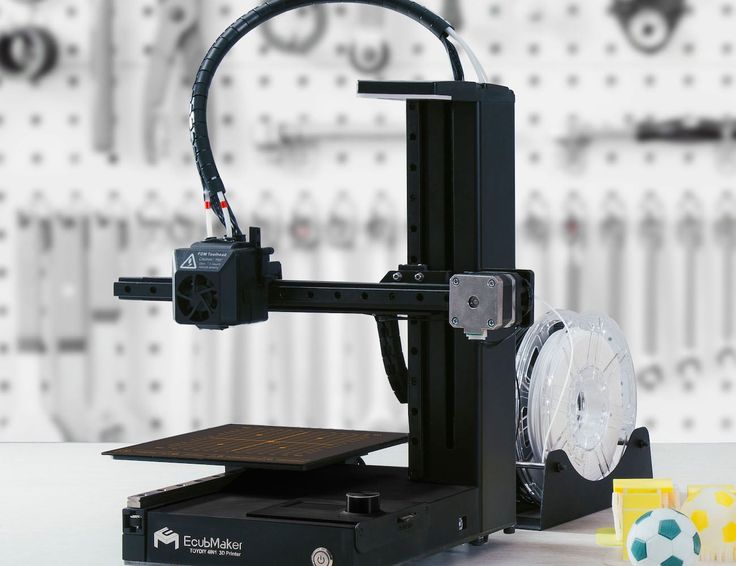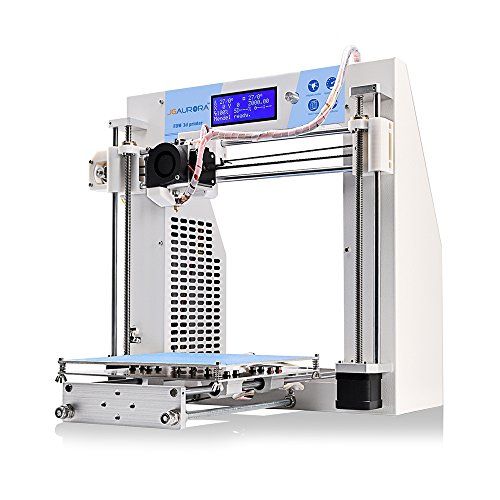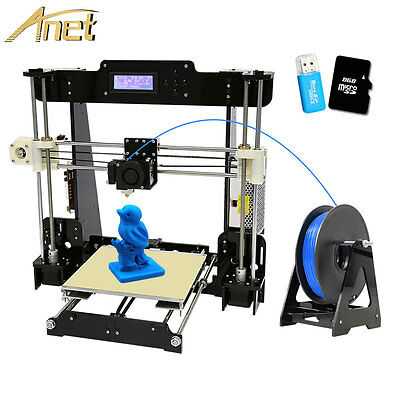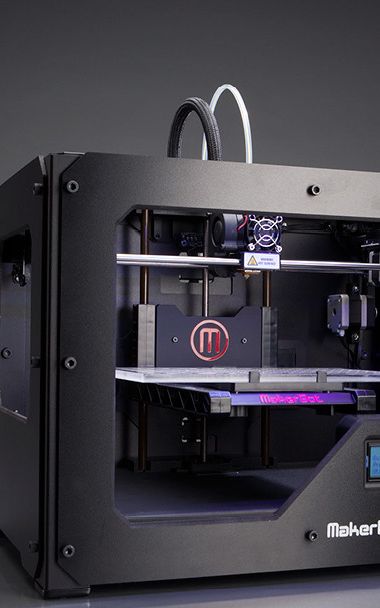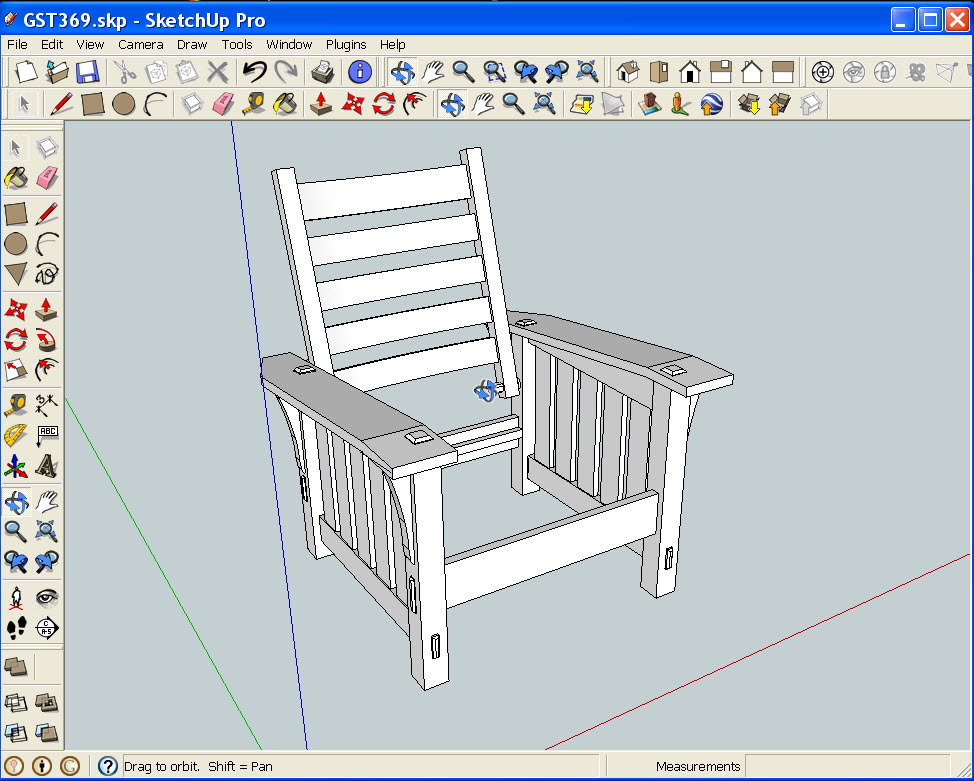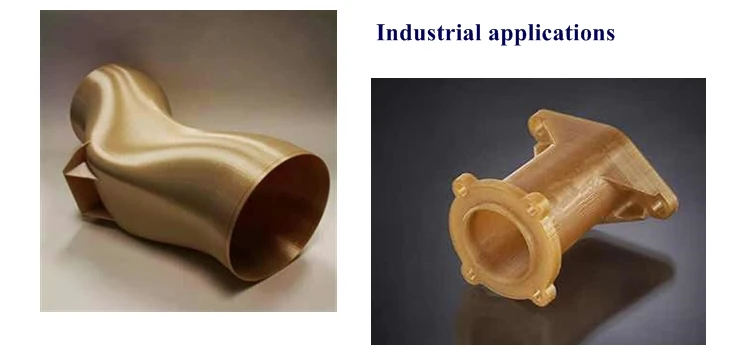Betabram 3d printer
BetAbram – Automate Construction
About The Company
BetAbram is a technology based on material layered extrusion process, where a concrete-like material is pushed through a nozzle that moves around the printable surface and deposits a continuous line of material in several layers, until the whole height of the object has been printed. While there is no particular focus on the material at this stage, the company has been experimenting mostly with mortars and very fine concretes. This process is seen in most 3D Construction printing technologies, and it is essentially a large scale implementation of the Fused Deposition Modeling (FDM), a very common technology seen in personal desktop 3D Printers.
The BetAbram is indeed very similar to its desktop counterparts in some aspects. It uses some of the same open source software, while it also aims at the very bottom level of the market, with an extremely affordable selection of printers that could be an easy investment for smaller construction contractors, or even 3D Printing enthusiasts.
The BetAbram is a project owned by Interelab, a company dealing with maintenance of large industrial machinery. While its parent company has been present for a longer time, BetAbram is fairly recent, having
started with 3D Printers only in 2012. The name gained wide media attention in 2014, when the frame of its first and smallest model has been released to the public, along with some test prints, showing a working prototype. The company announced its following larger models that were missing adjustments of software. However, some financial issues followed, along with some technical issues regarding the extruder and material, which brought the project nearly to a halt. After resolving the financial issues, the project has been restarted in the middle of 2016. The company has redesigned its webpage and logo, and has been working with optimizing the printer models. They claim they have been working mostly on a new type of extruder, based on what has been learned with the first prototypes.
The BetAbram is a project owned by Interelab, a company dealing with maintenance of large industrial machinery. While its parent company has been present for a longer time, BetAbram is fairly recent, having
started with 3D Printers only in 2012. The name gained wide media attention in 2014, when the frame of its first and smallest model has been released to the public, along with some test prints, showing a working prototype. The company announced its following larger models that were missing adjustments of software. However, some financial issues followed, along with some technical issues regarding the extruder and material, which brought the project nearly to a halt. After resolving the financial issues, the project has been restarted in the middle of 2016. The company has redesigned its webpage and logo, and has been working with optimizing the printer models. They claim they have been working mostly on a new type of extruder, based on what has been learned with the first prototypes.
The current number of employees and the sheer size of the company are not clear at this stage, but it is still quite small (less than 10 employees). The project is led by its founder, Joze Abram, mostly alone, while Rene Ribič has been a mentioned as a sales manager in the past. Other workers and experts are hired ad hoc, when larger work on the printer is necessary.
The company aims exclusively at selling printers and offering technical support and maintenance of the machines. The printers are currently built on demand, which translates to waiting times of about 6 months.
Apart from some tests prints and prototypes on behalf of the company, there are no publicly known project involving BetAbram up to date.
BetAbram has 3 machines at the moment, one for each of their models (P1, P2 and P3), which are in a development phase. During the visit (December 2016), the largest model has been shown in a prototype stage, where the gantry movement structure was fully operational, but the extrusion head was missing, which was said being under maintenance and further development. The company has also published several footage showing the mentioned model fully operational in the past. The company is now working on a new type of extrusion head.
The company has also published several footage showing the mentioned model fully operational in the past. The company is now working on a new type of extrusion head.
Projects
The BetAbram additive manufacturing process falls under the category of Layered Material Extrusion. This is an construction-scaled Fused Deposition Modeling (FDM) process, a very known desktop printer process where a material in fluid form is extruded through a small nozzle as a continuous stream or filament. The material is then solidified on the printing surface, ready for the next layer to printed on top. While its desktop counterpart uses molten plastic, that melts when going through a hot nozzle and then solidifies by cooling down, the construction scale process is quite the opposite. Here a cement-based material, usually a mortar, is mixed right before being fed into the machine. While still fluid, the material is extruded through a simple nozzle, which only helps to shape and channel the material, very similar to adding frosting to a cake. When the material reaches the printing surface it starts to solidify by itself in a chemical reaction with air, which is also known as hardening (first hours) or curing (long term, several days). This process has a considerable level of sensitivity, since hardening should not be completed entirely before the next layer has been printed, in order to ensure a good bond between the layers, but it should also be sufficient enough to sustain the weight of the following layer (or layers).
When the material reaches the printing surface it starts to solidify by itself in a chemical reaction with air, which is also known as hardening (first hours) or curing (long term, several days). This process has a considerable level of sensitivity, since hardening should not be completed entirely before the next layer has been printed, in order to ensure a good bond between the layers, but it should also be sufficient enough to sustain the weight of the following layer (or layers).
The printing procedure starts with a 3D model being sliced into layers by a layering software such as Simplify3D, Slic3r or similar. The print is sliced according to the properties of the material, or more specifically how much it will settle down when extruded, which is approximately 10-20mm layers. The software then translates each layer into the movement of the nozzle around the printable area, using a programming language called G-code. Depending on the needs of the print, the machine can be instructed to:
- ● Print only the outlines of the object: This approach is the most typical and the most suitable one for formwork and walls, since it allows to print the outer walls of the object, and then fill in manually the space in between.

- ● Fill the object completely as a solid: this mostly done when a part needs to be heavy or structural (a solid is usually more resistant than a hollow material)
- ● Partially fill by creating a specific pattern/geometry: this type of filling is used mostly to reduce the quantity of material, the weight of the object, to reduce deformations that are induced from the material warping (less material, less warping usually), or similar reasons. It is usally done as a square mesh, but it can also be done in various specific shapes, if necessary.
Once the software has prepared a file with all the necessary machine instructions, the printing process can start. The concrete-like material is mixed in smaller batches, to prevent it from hardening too soon and blocking the machine (cement-based materials are usually workable for a few hours). The first batch is loaded into the pump, which pushes it to the nozzle and deposits it on a flat surface. Once the first layer has been printed, the next one can be printed on top. With each following layer there is some weight added to the structure, which will squeeze the first layers, making the whole print slightly shorter. Therefore it is necessary to stop or slow down the printing process, to allow the first layers to harden enough. The BetAbram process can print up to 25 centimeters in one go, but then it is necessary to wait for 5-6 hours in order to have the layers harden enough for the next batch. Once the last layer of the object has been printed, the process is finished. The printed object is then left to harden completely (process known as curing).
Once the first layer has been printed, the next one can be printed on top. With each following layer there is some weight added to the structure, which will squeeze the first layers, making the whole print slightly shorter. Therefore it is necessary to stop or slow down the printing process, to allow the first layers to harden enough. The BetAbram process can print up to 25 centimeters in one go, but then it is necessary to wait for 5-6 hours in order to have the layers harden enough for the next batch. Once the last layer of the object has been printed, the process is finished. The printed object is then left to harden completely (process known as curing).
Since each layer needs to be printed on top of the previous one, the freedom of this additive manufacturing technology is more limited than others. The printer can create any shape in the horizontal plane, but once that shape has been chosen, it can only create vertical extrusions of this shape on top of it, or at least something contained within the shape itself, since it is impossible to start a next layer in the midair.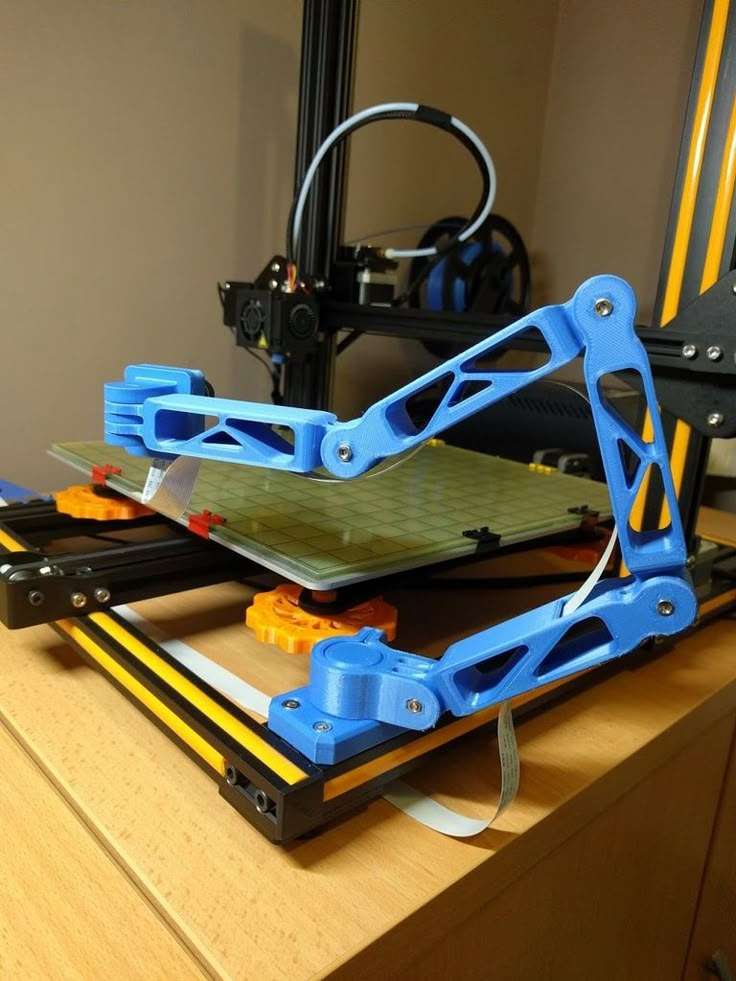 This type of printing freedom is not considered three dimensional, and it is often referred to as 2.5D freedom.
This type of printing freedom is not considered three dimensional, and it is often referred to as 2.5D freedom.
There is however a possibility to print each layer slightly leaning towards the outside compared to the previous one, slightly hanging over the edge. This allows to create mildly arched structures. While this
approach is very common in desktop 3D Printing, where the sizes are very small and the materials are very light, it is much more complicated to achieve the same with a heavy and fluid material such as concrete, especially on a construction scale. It has a very unpredictable behavior that depends a lot on the quantities that have been mixed, how long has the material been hardening, and many other external factors, such as wind as an example.. There is a high risk of the whole structure collapsing after many layers have been printed, losing a day’s work. BetAbram has currently shown only vertically extruded objects and has not experimented with overhanging structures, probably due to the issues with the material described above.
The printer requires a firm and straight support for its rails, and it would be best to make a small concrete foundation for the printer, to prevent any collapsing during the use. The printer also needs a fairly flat surface for its printable area, that needs to support to be able to support the weight of the print. Every bump or uneven spot on will deform the layer, which will follow its shape and create a bump into every next layer.
The printing process can be compromised with some considerable atmospheric agents, such as heavy wind or rain. However, it should be able to sustain some very light rain or wind without any substantial damage. Optimally, the printer should be covered by a tent or a similar lightweight structure. Also, the hardening process depending on temperature, and exposure to very warm temperatures or very strong direct sunlight can compromise the printing, create cracks, make the material harden too quickly and similar.
Printer
The BetAbram 3D Printers come in three models, with the main difference in the size of the printable area.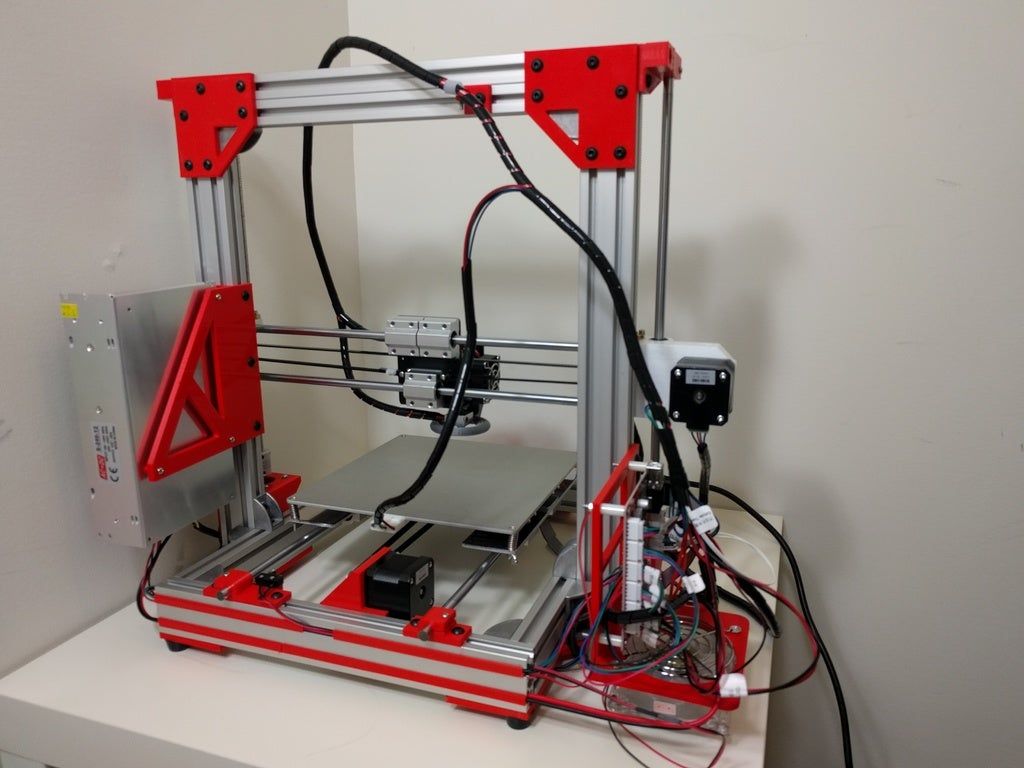 The P3 is the entry level printer with a smaller area of 4 x 3 square meters, and is intended for 3D Printing enthusiasts. The P2 is a middle level 12 x 6 square meters printer, and is intended for semi-professional use. The last and largest printer is the P3 model, which is said to be designed for construction companies. The different printers will be described jointly, since most of the printers are very similar structure and functioning.
The P3 is the entry level printer with a smaller area of 4 x 3 square meters, and is intended for 3D Printing enthusiasts. The P2 is a middle level 12 x 6 square meters printer, and is intended for semi-professional use. The last and largest printer is the P3 model, which is said to be designed for construction companies. The different printers will be described jointly, since most of the printers are very similar structure and functioning.
The BetAbram printer moves with a cartesian gantry system within a printable volume. The height of the printable volume is 2,5 meters, while the printable area varies according to the model (see paragraph and table above). Each of the three axes of movement are driven independently, with their own motors.
The printer is mounted on top of two parallel rails that are fixed to the ground before erecting the printer. Two columns on wheels sit on top of the each rail. All fours columns move together along the rails, dragged by a system of metal wire ropes and pulleys that is powered by electromotors placed on one end of the rails.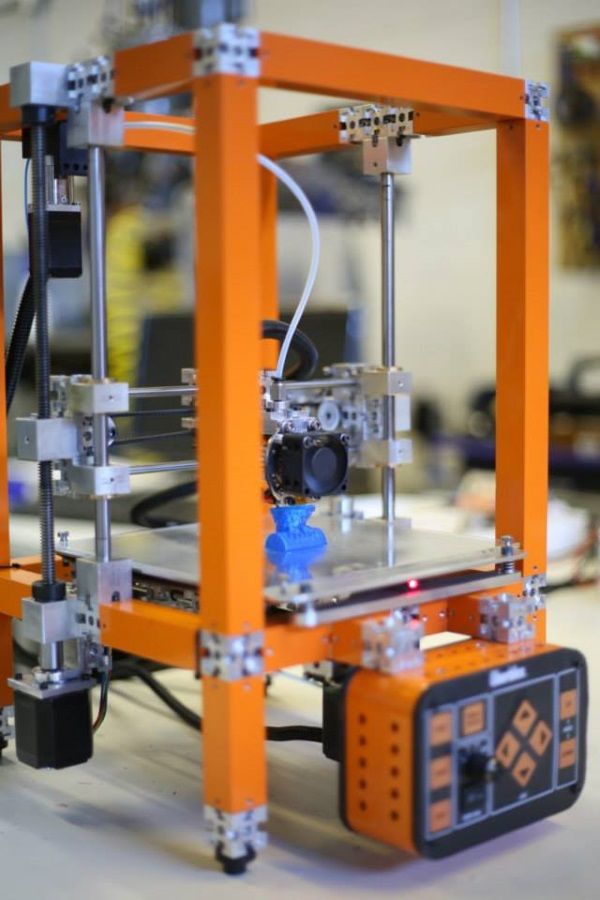 This is the first axis of movement of the printer in the horizontal direction. Between the two pairs of columns there is a large middle beam that stands perpendicular to the rails and is fixed to the two pairs in the top. Finally, there is a vertical steel tube profile that has the nozzle mounted on its bottom end. This steel tube is mounted on the large middle beam and can move along it in the second horizontal axis direction. At the same time the steel profile can also be raised along its own vertical axis, moving the nozzle up or down. This way all three dimensions are covered, allowing the printer to cover every point within the printing volume.
This is the first axis of movement of the printer in the horizontal direction. Between the two pairs of columns there is a large middle beam that stands perpendicular to the rails and is fixed to the two pairs in the top. Finally, there is a vertical steel tube profile that has the nozzle mounted on its bottom end. This steel tube is mounted on the large middle beam and can move along it in the second horizontal axis direction. At the same time the steel profile can also be raised along its own vertical axis, moving the nozzle up or down. This way all three dimensions are covered, allowing the printer to cover every point within the printing volume.
The deposition system is a single nozzle with a cylindrical shape. The nozzle is attached to a rubber hose, that connects it directly to the pump that delivers the concrete through pressure.. On some versions, the nozzle is also shown equipped with an electronic controller that allows to regulate or open/close the flow of concrete. The nozzle controller is also equipped with two water pipe connectors, one on each side, that allow to mix additional liquid materials into the mix right before extrusion.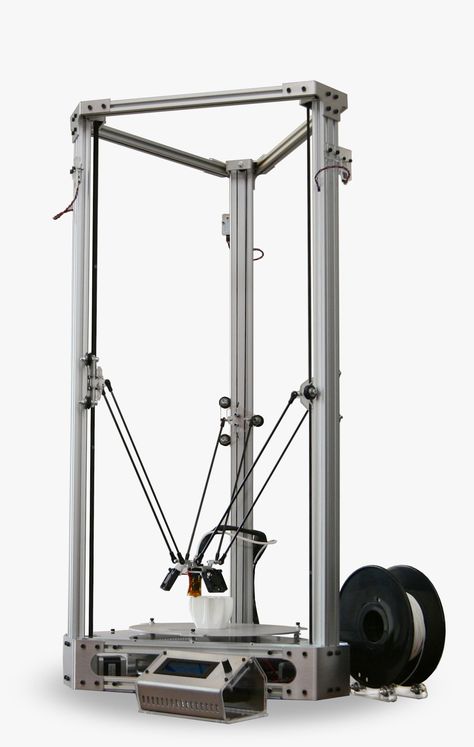 How this controller relates to the pressure created by the pump on the other end or if there is a connected system between them is currently not known.
How this controller relates to the pressure created by the pump on the other end or if there is a connected system between them is currently not known.
The material is fed through a mobile screw pump, readily available on the marked (see example picture below). This pump consists of a feeding bucket in which the material is placed. The fluid material is so pushed down by gravity into a screw placed on the bottom of the bucket that rotates through the help of an electromotor and feeds the concrete into a pipe. This pipe is connected to a rubber hose, through which the concrete is delivered under pressure. This rubber hose is then connected to the nozzle of the BetAbram printer.
The printer is operated through a set of programmable logic controllers and sensors, which are connected to a personal computer. The software used to create the machine instruction is open source, while the communication between the computer and the machine is said to be done on a modified CNC software, which was optimized to be used for the BetAbram printers by the company itself.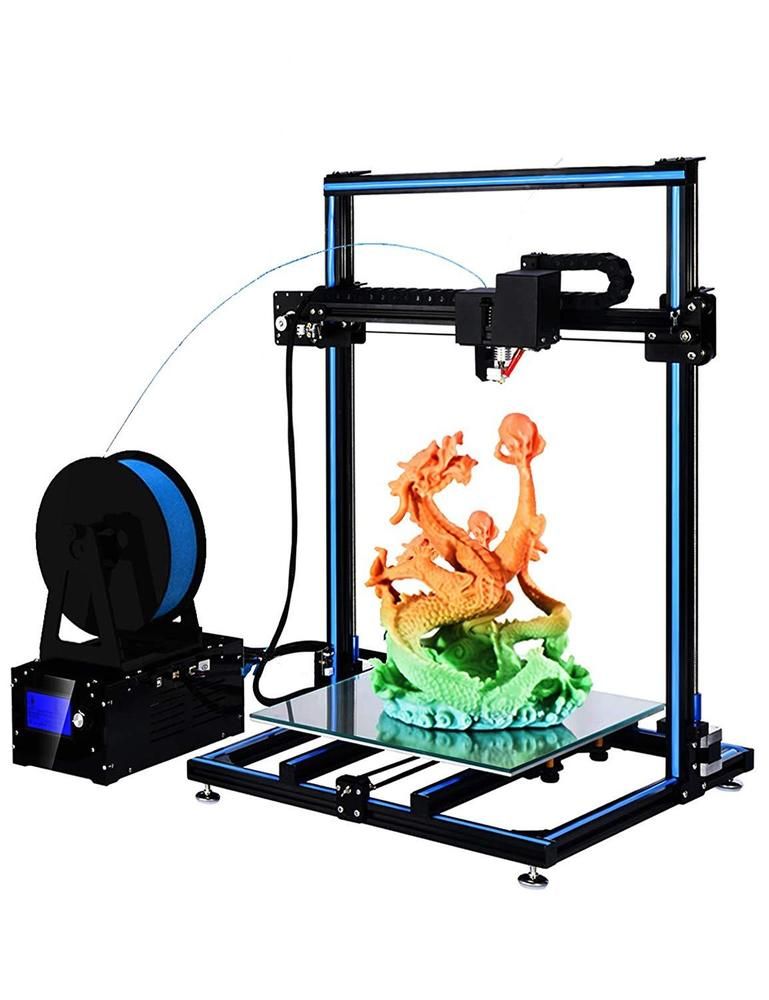
The printer speed is hard to define at this point, since there are no official statements from the company. However, at the current state, with the current size of the nozzle, the printing speed can be estimated to not more than 0.5m3/hour.
Similar to the speed, the accuracy of the printer is hard to define, since there are no official values given by the company and there have not been extensive print trials. The accuracy is also depending on the material mix that is used. Currently there is no specifically designed material, so it is not possible to define its properties. The accuracy is also influenced by the movement system, which in this case is partially made of metal wire ropes. These ropes have a certain degree of elasticity, which makes the movements of the printer oscillate and more prone to error. Judging by what has been seen in operation, the accuracy is estimated to approximately less than 50mm.
Ideally, two persons should be operating the whole printing procedure.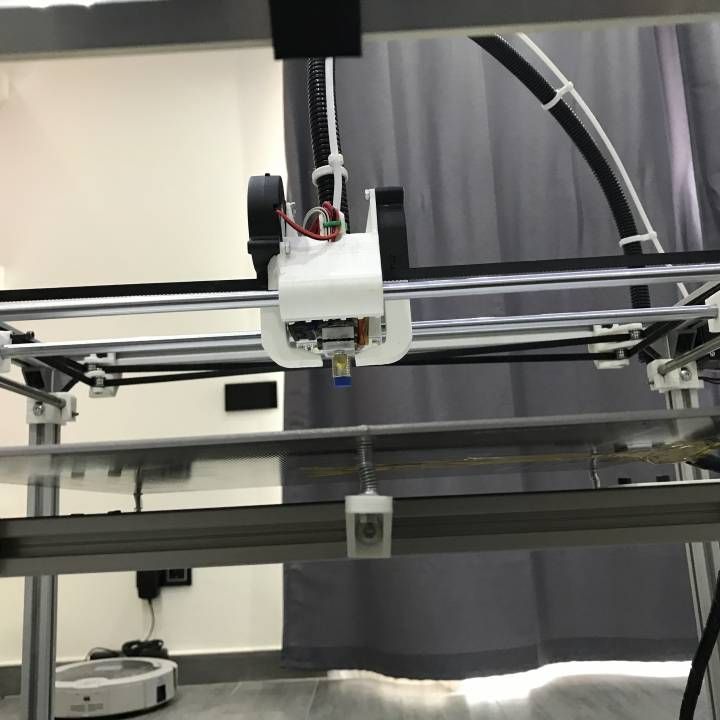 Given the sensitive nature of concrete materials, one person should be dedicated only to mixing and loading the material. The other person is dedicated to operating and controlling the printing process.
Given the sensitive nature of concrete materials, one person should be dedicated only to mixing and loading the material. The other person is dedicated to operating and controlling the printing process.
Printer size (assembled): 9m x 16m x 3.5m (Width x Length x Height – largest model P3) 6m x 12m x 3,5m (middle model P2)
3m x 4m x 3,5m (smallest model P1)
Printer size (stored): Not available
Print volume: 8m x 14m x 2,5m (Width x Length x Height – largest model P3)
5m x 10m x 2,5m (middle model P2) 2m x 3m x 2,5m (smallest model P1)
Printing speed (estimated): Approx. 0.5m3/hour Layer thickness: 10-20mm
Accuracy (estimated): <50mm
Deposition head: Single nozzle (pressure extrusion) Structure: Aluminum and steel gantry
Movement: 3 electromotors (1 vertical, 1 horizontal through pulleys, 1 horizontal along beam) Shape freedom: 2. 5D
5D
Weight: 520 Kg (largest model P1), 400kg (middle model P2), 250kg (smallest model P3) Energy consumption: 4kW (models P1 and P2), 3kW (smallest model P3)
Required personnel: 1-2 persons
Price per unit: 32.000 € (largest model P1), 20.000 € (middle model P2), 12.000€ (smallest model P3)
BetAbram at Work on 3D Printed House, Expects to Sell 500 Construction 3D Printers Within 5 Years » 3D Printing Media Network
Stay up to date with everything that is happening in the wonderful world of AM via our LinkedIn community.
Based in Slovenia, BetAbram is one of the companies that pioneered commercial house 3D printing and construction 3D printers. The company started working on printers in 2012 and since then continued to develop its cutting-edge technology. Up to date news on the company’s projects are not so easy to come by, but we were able to catch up with BetAbram’s CEO, René Kreissel, to find out about their most ongoing projects and business outlook.
The company started working on printers in 2012 and since then continued to develop its cutting-edge technology. Up to date news on the company’s projects are not so easy to come by, but we were able to catch up with BetAbram’s CEO, René Kreissel, to find out about their most ongoing projects and business outlook.
How Much Are BetAbam’s Construction 3D Printers Retailing for?
“Prices for our fully equipped printers can vary significantly*. What I can say at this time is that the price includes the 3D printer itself, special nozzles and accessory systems (which help the 3D printer work, such as an elevator or pump).”
What is your outlook on the 3D printing construction business?
“Demand is huge, we get emails and phone calls from all over the world and we are currently forming very relevant partnerships within one of the biggest markets in the world.
We expect to sell as many as 500 units within the next 5 years and as many as in 3,000 units within 10 years.”
What are your current projects?
“We are just working on printing a house of 10m x 8m. As you can see in the pictures. It would already be finished but weather slowed us down a little as in Slovenia it is winter now. This house will require about 10 cubic meters of concrete per floor. We did complete work on a sample art sculpture of a fish, as you can also see in the pictures.”
Which materials can your construction 3D printers use?
“We primarily use normal concrete with a few special additives. This type of concrete and additives are available almost everywhere in the world. We chose to use these materials so that our customers do not have run into troubles finding the construction material on location.”
What software do you use?
“For designing house we actually recommend SketchUp, as it is the easiest way to 3D design an object.
For operating the 3D printer we use our own software, developed internally.”
Want to know more about the huge potential revenue opportunity for 3D printing technologies in additive manufacturing? Check out the latest report “DIGITALIZING THE CONSTRUCTION INDUSTRY WITH ADDITIVE MANUFACTURING: AN OPPORTUNITY ANALYSIS AND TEN-YEAR FORECAST“, published by SmarTech Publishing: click here to view the table of content.
*This article has been edited on February 7th, 2018, to remove system pricing following new developments at BetAbram.
Related Articles
| 3DNews Technologies and IT market. Interesting news from the world of high-tech BetAbram 3D printer: inexpensive device... The most interesting in the reviews 05/27/2014 [17:20], Dmitry Prikhodko Recently, talk about industrial 3D printers has become an increasingly hot topic for discussion. Perhaps, most often in the field of three-dimensional printing devices, developments in medicine are of interest, as they require maximum accuracy of the manufactured models, as well as urban planning, as the most large-scale ones. On our site, we have already talked about promising initiatives in this area, such as a Contour Crafting printer to build a residential building in 24 hours or a frame house project by architects from Amsterdam. This year in China, for example, 10 single-story budget houses in Shanghai Hi-Tech Industrial Park have already been built in just 24 hours. This operation was carried out using the technology of fast-hardening cement and four 3D construction printers designed by a Chinese engineer. economia.terra.com.br economia.terra.com.br economia.terra.com.br Now you can get acquainted with the technology of creating residential structures not only through commercials and within the framework of government programs. Do you want to build your high-tech housing in the shortest possible time? Buy for personal use the world's first mass-produced and available to anyone 3D printer from the Slovenian company BetAbram, which will "print" your house at your discretion. 3dprint.com The height of the BetAbram P3 device reaches 2 m. The chosen solution during the creation of the device allowed it to move without much difficulty in horizontal and vertical (if you plan to build at least a two-story building) planes thanks to the rail system of movement of the device. At the same time, the length of the future house is limited by a maximum length of 4 m, and its width will be 3 m. But for the height, such a restriction, as such, is completely absent. If the declared characteristics of the BetAbram P3 model are not enough for you, then you should pay attention to the rest of the line of printing mechanisms of the developer company. The list of devices available for order also includes the BetAram P2 printer, capable of creating a structure 12 meters long and 6 meters wide, as well as the most serious representative of the model range - BetAbram P1. The latter is ready to design a room with dimensions of 16 by 9 m.0007
Be warned that if you plan to start building with a new 3D printer as early as the first days of next month, then we will have to disappoint you. The first batch of devices from BetAbram should appear no earlier than July-August this year. Source: If you notice an error, select it with the mouse and press CTRL+ENTER. Related materials Permanent URL: https://3dnews.ru/820938 Headings: News Hardware, interesting things from the world of hi-tech, on the cutting edge of science, 3D technologies, Tags: hardware, 3d printer, 3d printing, construction, house ← В past To the future → |
BetAbram intends to 3D print a two-story house this summer
06/22/2015
When the Slovenian manufacturer of home printers was first reported about a year ago, it was hard to tell how serious the company's claims were about its plans to sell three different models of large concrete printers for $12,000-$16,000.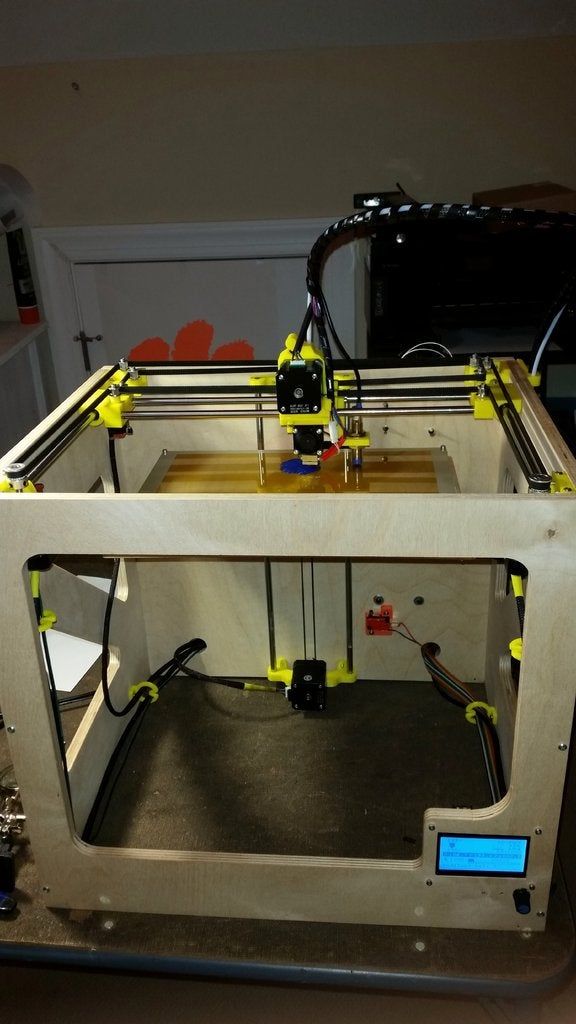 But when BetAbram began showcasing its 3D printed creations last December, it was clear they truly believe in what they are doing. Today, they have provided further evidence that they are indeed capable of building their epic machines, having almost completed the construction of the largest P1 3D printer in the line.
But when BetAbram began showcasing its 3D printed creations last December, it was clear they truly believe in what they are doing. Today, they have provided further evidence that they are indeed capable of building their epic machines, having almost completed the construction of the largest P1 3D printer in the line.
Previously, BetAbram was able to prove its ability to 3D print concrete structures by showing part of a beautiful staircase. Even the Slovenian Olympic hammer thrower Primož Kozmus stood on top of their design, proving its strength. In the promo video below, BetAbram shows off its large house printer P1 in all its glory: 2000x9000x16000mm. However, the P2 and P3 printers will have the following dimensions: 2000x6000x2000 mm and 12000x3000x4000 mm respectively. At the moment, BetAbram says it only takes them two months to build the printer, but once they're up and running, the timeline will be much shorter.
The company says they are now planning to 3D print a 12m x 8m two-story house after the P1 improvement.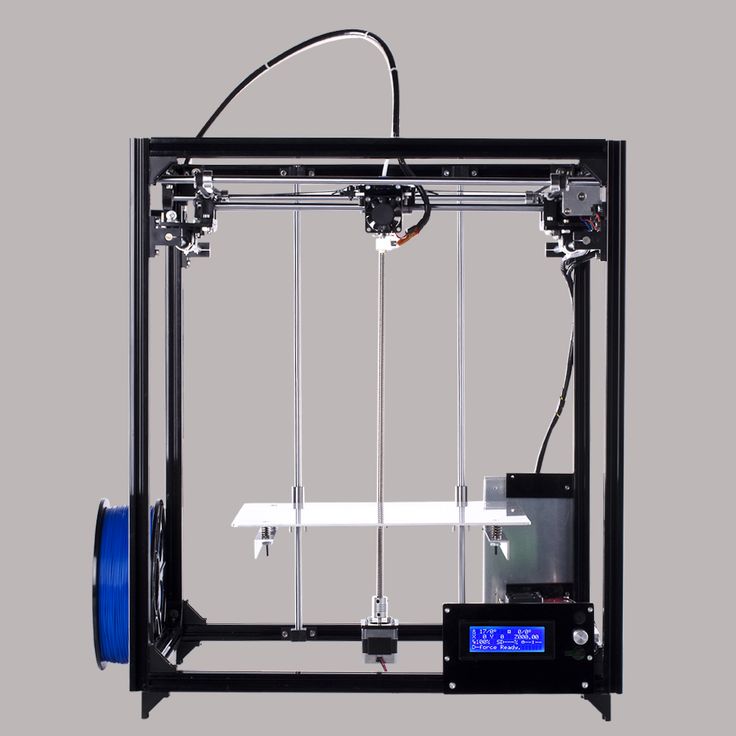 The building is still in the design process, but the company has shown a rough CAD model. The printing of the house is planned to be completed at the end of July. René Riebik, BetAbram's sales manager, said it took about 4-5 hours to 3D print a 25cm wall in December. But, since the weather was cold then, the drying process was long. Thus, they believe that this time the drying process will be shorter, as it is now summer. In addition, when printing long walls, the material has more time to dry.
The building is still in the design process, but the company has shown a rough CAD model. The printing of the house is planned to be completed at the end of July. René Riebik, BetAbram's sales manager, said it took about 4-5 hours to 3D print a 25cm wall in December. But, since the weather was cold then, the drying process was long. Thus, they believe that this time the drying process will be shorter, as it is now summer. In addition, when printing long walls, the material has more time to dry.
Seeing the achievements of the company and its plans for the future, I wonder where it gets the funds for the project from. Reebick says: "You know, when it comes to money, there is never enough money. With better funding, we would progress much faster, but we are content with what we have and hope for a brighter future. At the moment, we are funding this project on their own, not just with money, but with a huge amount of hard work."
In terms of motivation, Reebick states: “Our dream is to provide 3D houses to ordinary people.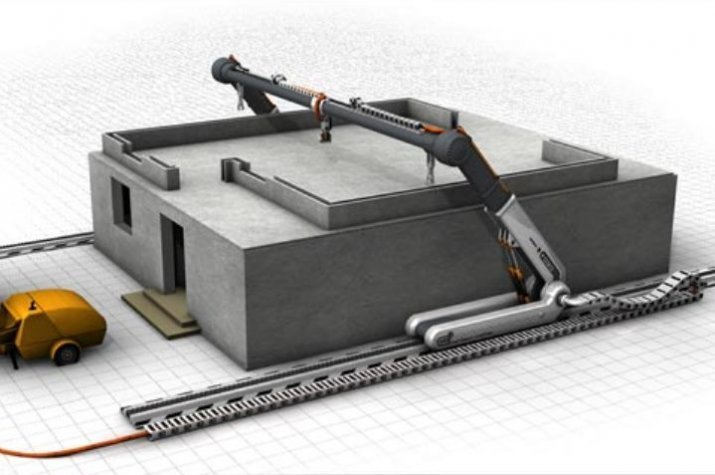



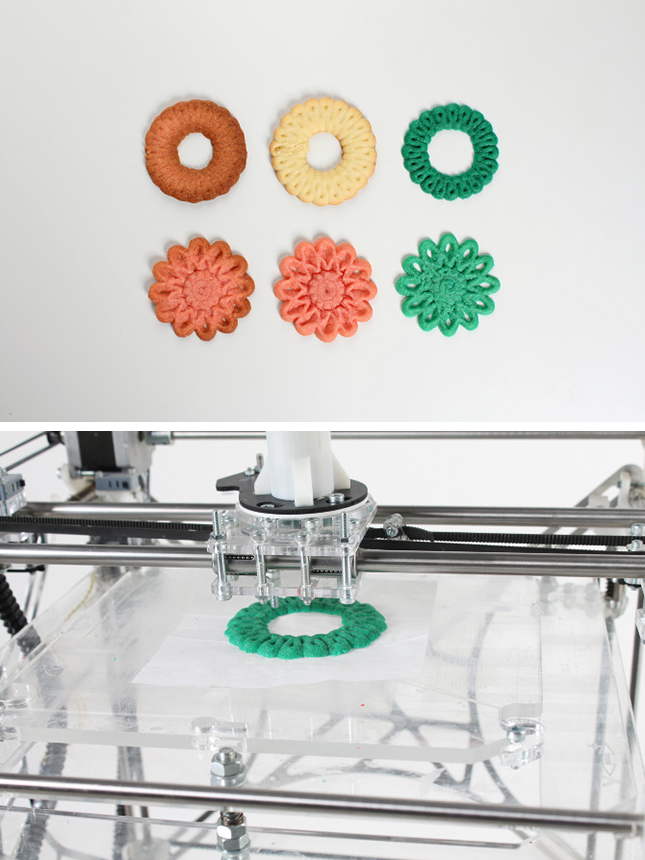 The principle of operation of the printing machine is clearly demonstrated in the promotional video:
The principle of operation of the printing machine is clearly demonstrated in the promotional video:  In addition, the developers themselves also cannot yet demonstrate the finished printed house, since the software is still in the process of being finalized.
In addition, the developers themselves also cannot yet demonstrate the finished printed house, since the software is still in the process of being finalized. 
